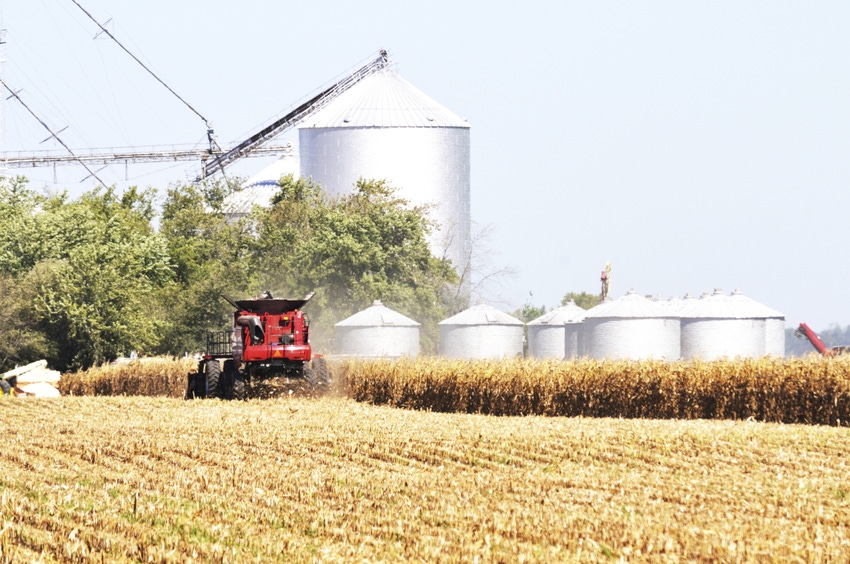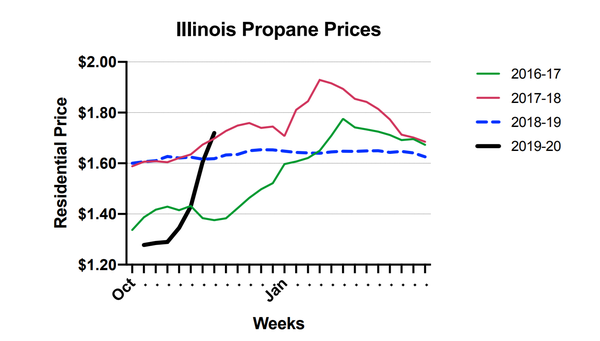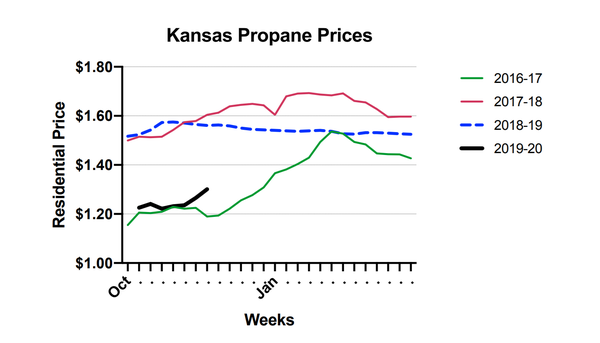Economists say prices likely to subside as U.S. crop harvest winds down.

There has been a lot of chatter the last several weeks about the availability and price of propane because it has been difficult to obtain in the U.S. Corn Belt this harvest season, according to Kansas State University economists Gregg Ibendahl and Dan O’Brien. In fact, even when propane is available, the prices have been much higher, they added.
“The current tight supply situation in the propane market is a result of a spike in demand in propane use for grain drying as well as other factors,” Ibendahl and O’Brien said.
While overall supplies are adequate, the difficulty has been getting propane to regions with high demand.
“An extremely slow-developing and -maturing 2019 U.S. corn crop is a primary cause of this U.S. propane price spike in prices that farmers are now facing,” Ibendahl and O’Brien said.
According to Feedstuffs’ sister publication Farm Futures, 16% of this year’s corn crop was still unharvested as of Nov. 24. The week’s tally of 84% harvested did mark moderate progress from last week’s 76% but remains well behind the 2018 pace of 93% and the five-year average of 96%, it noted.
Crop maturity is behind, leading farmers to have to dry wetter-than-normal grain. As a result, there has been a sharp increase in demand for propane for drying, Ibendahl and O’Brien noted.
Consistent with economic principles of supply and demand, they said the demand increase and logistical difficulties of shifting propane to the high-demand regions of the Corn Belt have resulted in a price spike in some regions.
“Prices have spiked much more in Illinois than in Kansas, which should not be unexpected, given that Illinois is one of the leading corn production states -- and which had a greater proportion of late-harvested ‘wet corn’ than Kansas in 2019,” Ibendahl and O’Brien said.


As for how long the situation may last, Ibendahl and O’Brien said once demand returns to normal, “prices would be expected to follow suit.”
Until that happens, however, they said prices are likely to remain above normal. With that said, other market factors or events, such as transportation disruptions in Canada, could also occur that would affect propane prices, they added.
Since margins are already very thin, any extra expenses for propane “will definitely be felt by farmers,” Ibendahl and O’Brien noted.
One possible option to avoid the added expense is to delay harvest and let the crop dry naturally in the field, they explained.
“That strategy provides two advantages,” Ibendahl and O’Brien said. "First, corn is expected to dry naturally as it sits in the field and, consequently, will not need as much propane to expedite drying in storage. Second, propane will likely be cheaper if harvested outside of or after this peak demand period in coming months.”
Even this isn’t without risk, though, they noted. Severe weather could lead to additional harvest losses.
“The 2019 crop year has certainly been an interesting and challenging year for U.S. grain producers in many parts of the U.S. Corn Belt,” Ibendahl and O’Brien said. “Although many farmers are probably ready to put this one in the book and try again in the spring, there is a continuing need to manage wet, late-maturing corn either in storage or still standing in the field or awaiting harvest.”
About the Author(s)
You May Also Like





